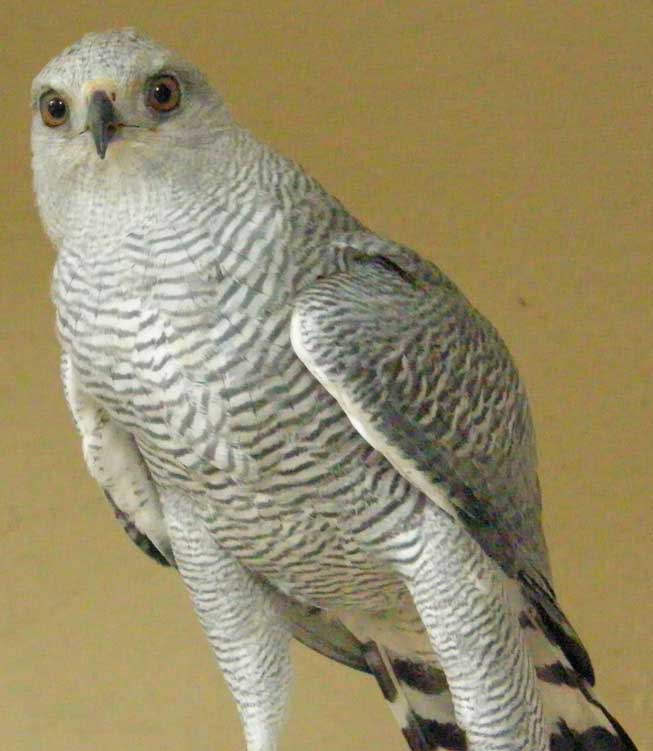
Buteo nitidus (*)
Superregnum: Eukaryota
Cladus: Unikonta
Cladus: Opisthokonta
Cladus: Holozoa
Regnum: Animalia
Subregnum: Eumetazoa
Cladus: Bilateria
Cladus: Nephrozoa
Superphylum: Deuterostomia
Phylum: Chordata
Subphylum: Vertebrata
Infraphylum: Gnathostomata
Megaclassis: Osteichthyes
Cladus: Sarcopterygii
Cladus: Rhipidistia
Cladus: Tetrapodomorpha
Cladus: Eotetrapodiformes
Cladus: Elpistostegalia
Superclassis: Tetrapoda
Cladus: Reptiliomorpha
Cladus: Amniota
Classis: Reptilia
Cladus: Eureptilia
Cladus: Romeriida
Subclassis: Diapsida
Cladus: Sauria
Infraclassis: Archosauromorpha
Cladus: Crurotarsi
Divisio: Archosauria
Cladus: Avemetatarsalia
Cladus: Ornithodira
Subtaxon: Dinosauromorpha
Cladus: Dinosauriformes
Cladus: Dracohors
Cladus: Dinosauria
Ordo: Saurischia
Cladus: Eusaurischia
Subordo: Theropoda
Cladus: Neotheropoda
Cladus: Averostra
Cladus: Tetanurae
Cladus: Avetheropoda
Cladus: Coelurosauria
Cladus: Tyrannoraptora
Cladus: Maniraptoromorpha
Cladus: Maniraptoriformes
Cladus: Maniraptora
Cladus: Pennaraptora
Cladus: Paraves
Cladus: Eumaniraptora
Cladus: Avialae
Infraclassis: Aves
Cladus: Euavialae
Cladus: Avebrevicauda
Cladus: Pygostylia
Cladus: Ornithothoraces
Cladus: Ornithuromorpha
Cladus: Carinatae
Parvclassis: Neornithes
Cohors: Neognathae
Cladus: Neoaves
Ordo: Accipitriformes
Familia: Accipitridae
Subfamilia: Buteoninae
Genus: Buteo
Species: Buteo nitidus
Subspecies: B. n. costaricensis – B. n. nitidus – B. n. pallidus
Name
Buteo nitidus (Latham, 1790)
Synonyms
Falco nitidus (protonym)
Asturina nitida
References
Latham, J. 1790. Index ornithologicus, sive systema ornithologiæ; complectens avium divisionem in classes, ordines, genera, species, ipsarumque varietates: adjectis synonymis, locis, descriptionibus, &c. Volumen I: pp. i–xviii, 1–466. Londini. (Leigh & Sotheby). BHL Reference page. : 41
Riesing, M. J., Kruckenhauser, L., Gamauf, A., & Haring E. (2003). Molecular phylogeny of the genus Buteo (Aves: Accipitridae) based on mitochondrial marker sequences. Molecular Phylogenetics and Evolution 27: 328-342.
Millsap, B. A., Seipke, S. H., & Clark, W. S. (2011). The Gray Hawk (Buteo nitidus) is two species. Condor 113: 326-339.
Vernacular names
brezhoneg: Baou louet
català: Aligot gris meridional
čeština: Káně šedá
Cymraeg: Gwalch gwelw
English: Grey-lined Hawk
Esperanto: Griza buteo
español: Busardo gris
suomi: Harmaaraitahaukka
français: Buse cendrée
italiano: Poiana grigia
Nederlands: Grijsgestreepte buizerd
Diné bizaad: Giní łibáago noodǫ́zígíí
polski: Myszołowik prążkowany
português: Gavião-pedrês
svenska: Gråstrimmig vråk
Türkçe: Gri çizgili şahin
The gray-lined hawk (Buteo nitidus) is a smallish raptor found in open country and forest edges. It is sometimes placed in the genus Asturina as Asturina nitida. The species has been split by the American Ornithological Society from the gray hawk. The gray-lined hawk is found from El Salvador to Argentina, as well as on the Caribbean island of Trinidad.
Description
The gray-lined hawk is 46–61 cm (18–24 in) in length and weighs 475 g (16.8 oz) average. The adult has a pale gray body, the tail is black with three white bands and the legs are orange. It has fine white barring on the upper parts. Immature birds have dark brown upperparts, a pale-banded brown tail, brown-spotted white underparts and a brown streaked buff head and neck. This species is quite short-winged, and has a fast agile flight for a Buteo.
Aligandi area - Darien, Panama
Juvenile
Cristalino River, South Amazon, Brazil
Diet
It feeds mainly on lizards and snakes, but will also take small mammals, birds and frogs. It usually sits on an open high perch from which it swoops on its prey, but will also hunt from a low glide.
Breeding
The nest is of sticks and built high in a tree. The usual clutch is one to three, usually two white to pale blue eggs.[3] The young take about 6 weeks to fledging.
References
BirdLife International (2016). "Buteo nitidus". The IUCN Red List of Threatened Species. IUCN. 2016: e.T22727766A94961368. doi:10.2305/IUCN.UK.2016-3.RLTS.T22727766A94961368.en.
Gill F, D Donsker & P Rasmussen (Eds). 2020. IOC World Bird List (v10.2). doi : 10.14344/IOC.ML.10.2.
"Animal Diversity (Asturina nitida)". Retrieved 2008-06-26.
Baillie, J.E.M.; Hilton-Taylor, C. & Stuart, S.N. (eds.) (2004): 2004 IUCN Red List of Threatened Species. A Global Species Assessment. IUCN, Gland, Switzerland and Cambridge, UK. ISBN 2-8317-0826-5
ffrench, Richard; O'Neill, John Patton & Eckelberry, Don R. (1991): A guide to the birds of Trinidad and Tobago (2nd edition). Comstock Publishing, Ithaca, N.Y.. ISBN 0-8014-9792-2
Hilty, Steven L. (2003): Birds of Venezuela. Christopher Helm, London. ISBN 0-7136-6418-5
Stiles, F. Gary & Skutch, Alexander Frank (1989): A guide to the birds of Costa Rica. Comistock, Ithaca. ISBN 0-8014-9600-4
Banks, Richard C.; Cicero, Carla; Dunn, Jon L.; Kratter, Andrew W.; Rasmussen, Pamela C.; Remsen, J. V.; Rising, James D.; Stotz, Douglas F. (2007). "Forty-Seventh Supplement to the American Ornithologists' Union Check-List of North American Birds" (PDF). The Auk. 123 (3): 926–936. doi:10.1642/0004-8038(2006)123[926:FSTTAO]2.0.CO;2. Full text via BioOne. (Asturina merged into Buteo, citing Riesing, et al. 2003.)
Riesing, M. J., L. Kruckenhauser, A. Gamauf, and E. Haring. 2003. Molecular phylogeny of the genus Buteo (Aves: Accipitridae) based on mitochondrial marker sequences. Molecular Phylogenetics and Evolution 27:328–342.
Retrieved from "http://en.wikipedia.org/"
All text is available under the terms of the GNU Free Documentation License

